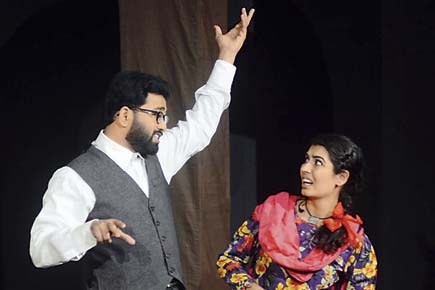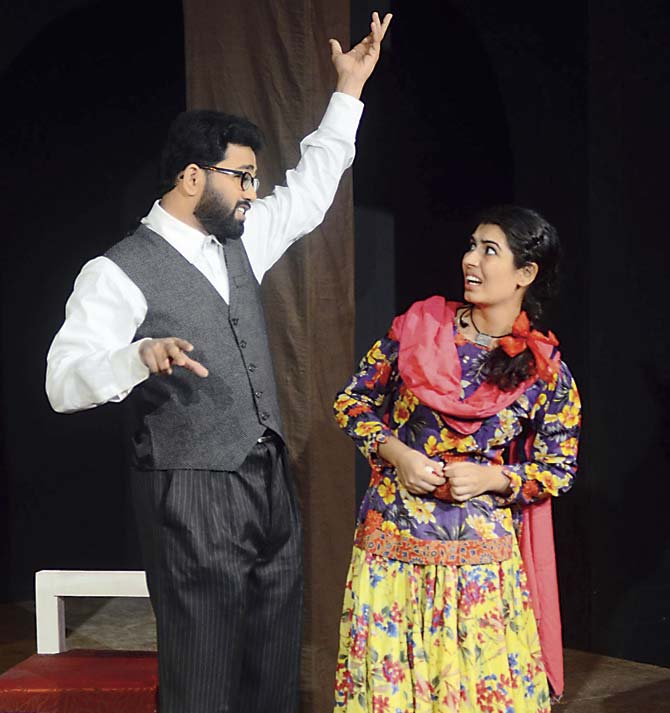Pygmalion was a sculptor who carved a woman out of ivory, and so realistic was his creation that he fell in love with it

 Pygmalion was a sculptor who carved a woman out of ivory, and so realistic was his creation that he fell in love with it. He prayed to goddess Aphrodite for a bride who would be “the living likeness of my ivory girl” and the wish that he did not dare express-to bring his statue to life-was granted by the goddess. Galatea was brought to life.
Pygmalion was a sculptor who carved a woman out of ivory, and so realistic was his creation that he fell in love with it. He prayed to goddess Aphrodite for a bride who would be “the living likeness of my ivory girl” and the wish that he did not dare express-to bring his statue to life-was granted by the goddess. Galatea was brought to life.
ADVERTISEMENT
Using this legend, George Bernard Shaw wrote his most popular play Pygmalion in 1912, which in turn was turned into an even more successful Broadway musical My Fair Lady (1956), which was turned into a film in 1964. Even before Shaw’s play, there was WS Gilbert’s Pygmalion and Galatea, that opened in 1871. So many years later, the appeal of the story just refuses to dim. And a version of the play is running in some part of the world. In Mumbai, there has been a great production Ti Phulrani, with Pula Deshpande doing the adaptation, and the Gujarati Santu Rangili by Madhu Rye. The number of films inspired by Pygmalion are too numerous to list.
 A still from the Hindi/Urdu play Aazar Ka Khwab at NCPA
A still from the Hindi/Urdu play Aazar Ka Khwab at NCPA
Unless somebody was living under a rock, they’d know, Pygmalion/My Fair Lady was about Professor Higgins, who, on accepting a bet from a new friend Colonel Pickering, takes on the task of turning a Cockney flower girl Eliza Doolittle into a lady, with the most refined speech. Once he has succeeded in passing her off as a noblewoman in a gathering of high society, he pretends to have no further interest in her, when actually, he has come to depend on her. Eliza is at crossroads, because she can hardly go back to her old life; there is obviously no place for her within the snobbish English upper class. Even in a state of confusion and despair, Eliza does not lose her pride, and in one of the play’s most famous scenes, when Higgins asks her to fetch his slippers, she flings them at him.
Audiences looking for the conventional happy ending, would like the story to end with Higgins and Eliza getting married, but Shaw did not want that. When he saw a version by Max Beerbohm Tree in which a romantic ending was suggested to please the crowds, Shaw is reported to have said, “Your ending is damnable; you ought to be shot.”
He wrote to Mrs Campbell, who played Eliza, and with whom he had a long-lasting friendship (portrayed with wit and charm in the play Dear Liar, performed in Mumbai by Naseeruddin Shah and Ratna Pathak Shah), saying, “When Eliza emancipates herself when Galatea comes to life she must not relapse. She must retain her pride and triumph to the end. When Higgins takes your arm on ‘consort battleship’ you must instantly throw him off with implacable pride; and this is the note until the final ‘Buy them yourself.’ He will go out on the balcony to watch your departure; come back triumphantly into the room; exclaim ‘Galatea!’ (meaning that the statue has come to life at last); and - curtain. Thus he gets the last word; and you get it too.”
In a new production of the Urdu version, Aazar Ka Khwab, directed by Atul Tiwari with the students of Mumbai University’s Academy of Theatre Arts, fruit seller Hajjo, upgraded to Hajira Begum, has three suitors kneeling before her in the hope of getting her nod for marriage-Higgins/Aazar, Pickering/Farhat and a minor character Freddie/Fareed.
Begum Qudsia Zaidi adapted Pygmalion in 1956, around the same time when Allan J Lerner’s My Fair Lady was opening in London. Even half a century ago, Zaidi resisted the temptation of giving the audience a conventional happy ending and respected Hajira Begum for what she had made of herself. The motivator may have been Aazar, but the hard work is all her own, and she expects the professor to give her credit for that.
It is very easy to portray the Higgins as a crotchety but likeable eccentric and Eliza as a wide-eyed and cute student who looks up to the professor. But Shaw never intended this to be a pulp romance-like older experienced man-young innocent girl love story. Even though the story is about educating Eliza into the manners and mores of the elite, Shaw’s most endearing character is Eliza’s drunken father, who sees his daughter's elevation from the streets to a fancy mansion as a way of making money for his booze habit. But when he is turned into a ‘gentleman’ and expected to marry his latest girlfriend, he resents it.
There was always potential for a what-happened-after story Eliza, like Galatea, may have been brought to life, but it is now her life to live, where she has to make use of her newly acquired skills. Back then, even a woman of refinement may not have had many choices, if she did not choose a marriage of convenience. In today’s world, Eliza would be able to achieve what Shaw could not have imagined; but he was progressive enough to imagine a world in which a woman could decide what she wanted. If she did not want to spend her life fetching slippers, she was free to throw them at the man.
Deepa Gahlot is an award-winning film and theatre critic and an arts administrator. She tweets at @deepagahlot
 Subscribe today by clicking the link and stay updated with the latest news!" Click here!
Subscribe today by clicking the link and stay updated with the latest news!" Click here!






